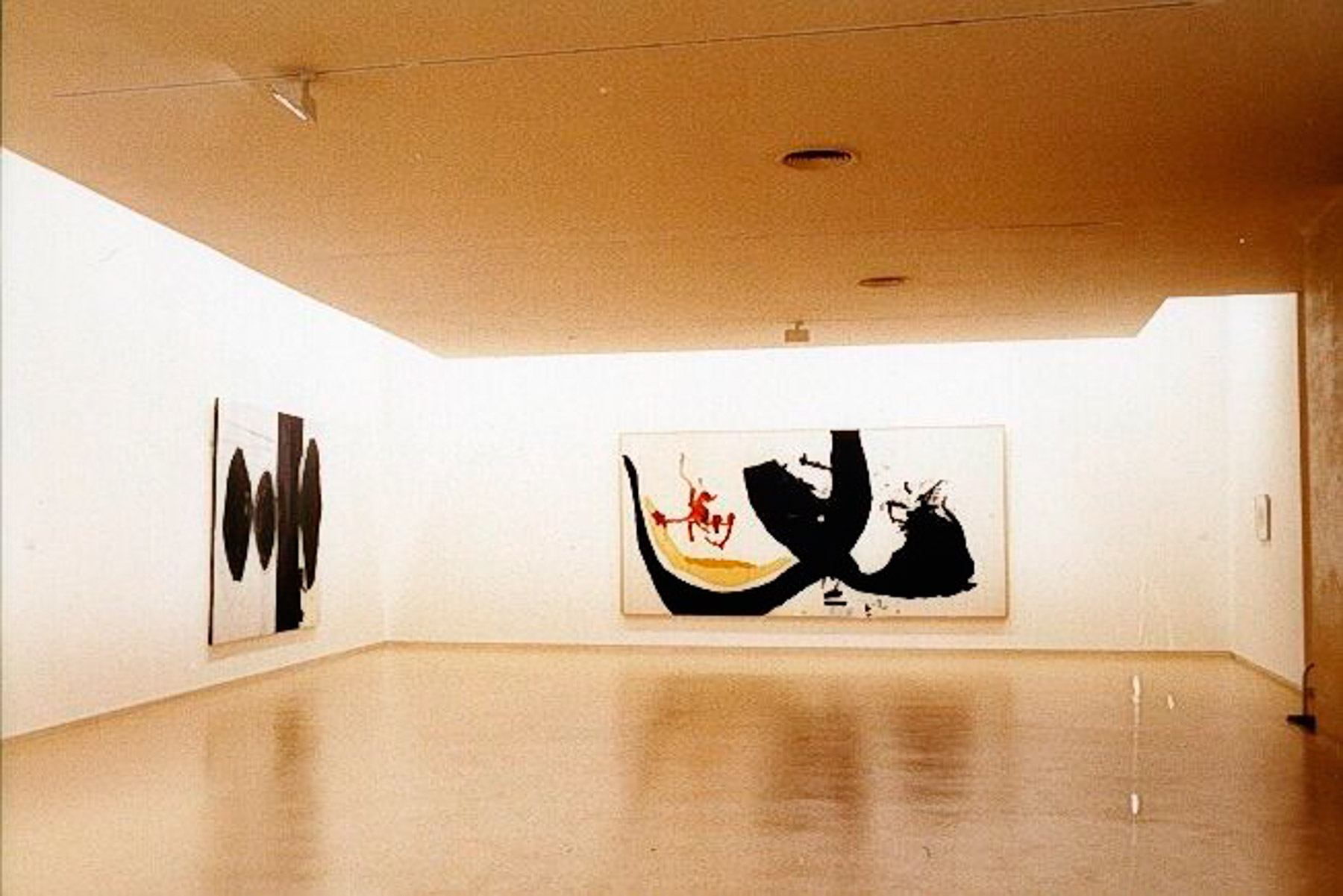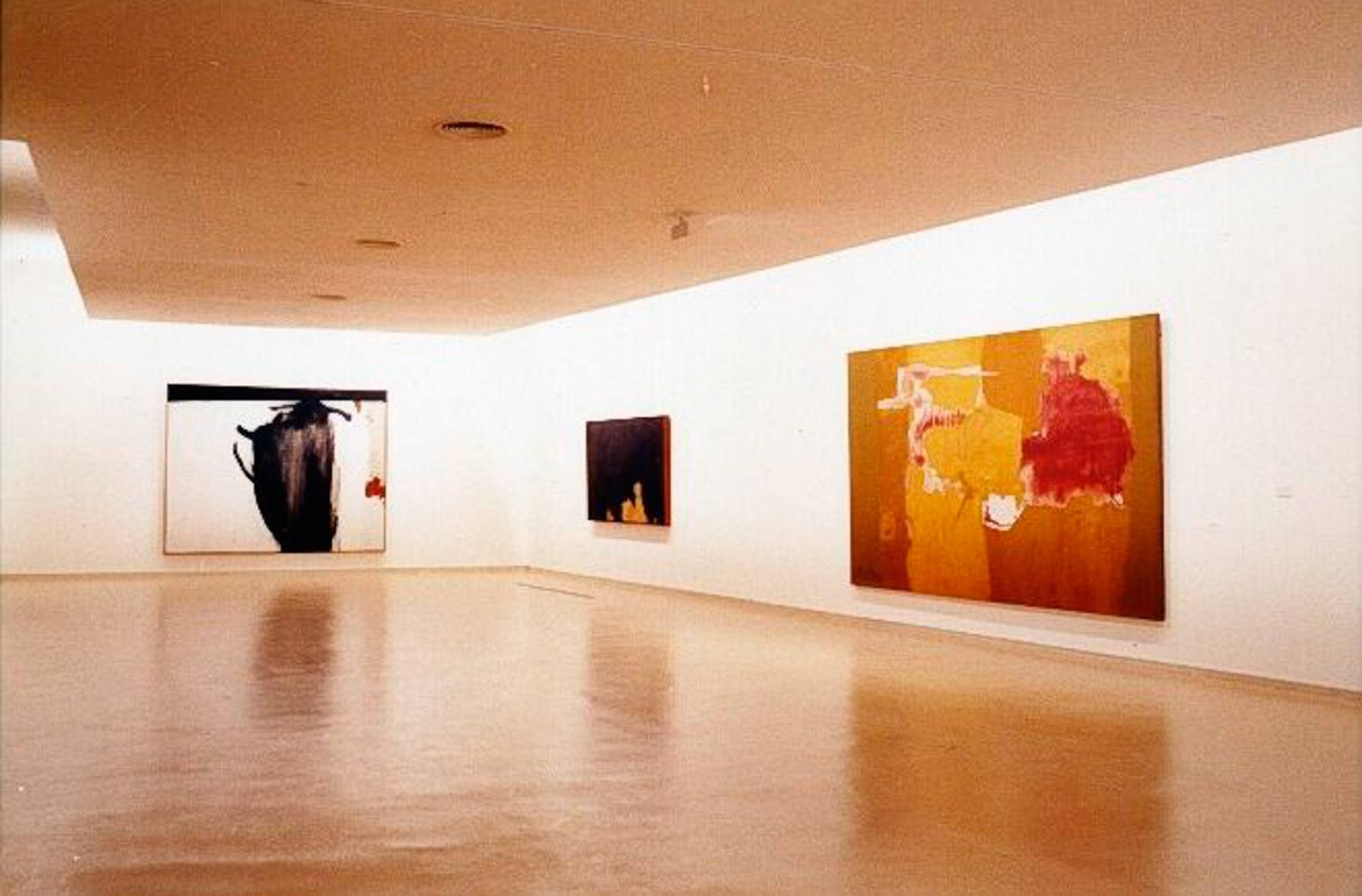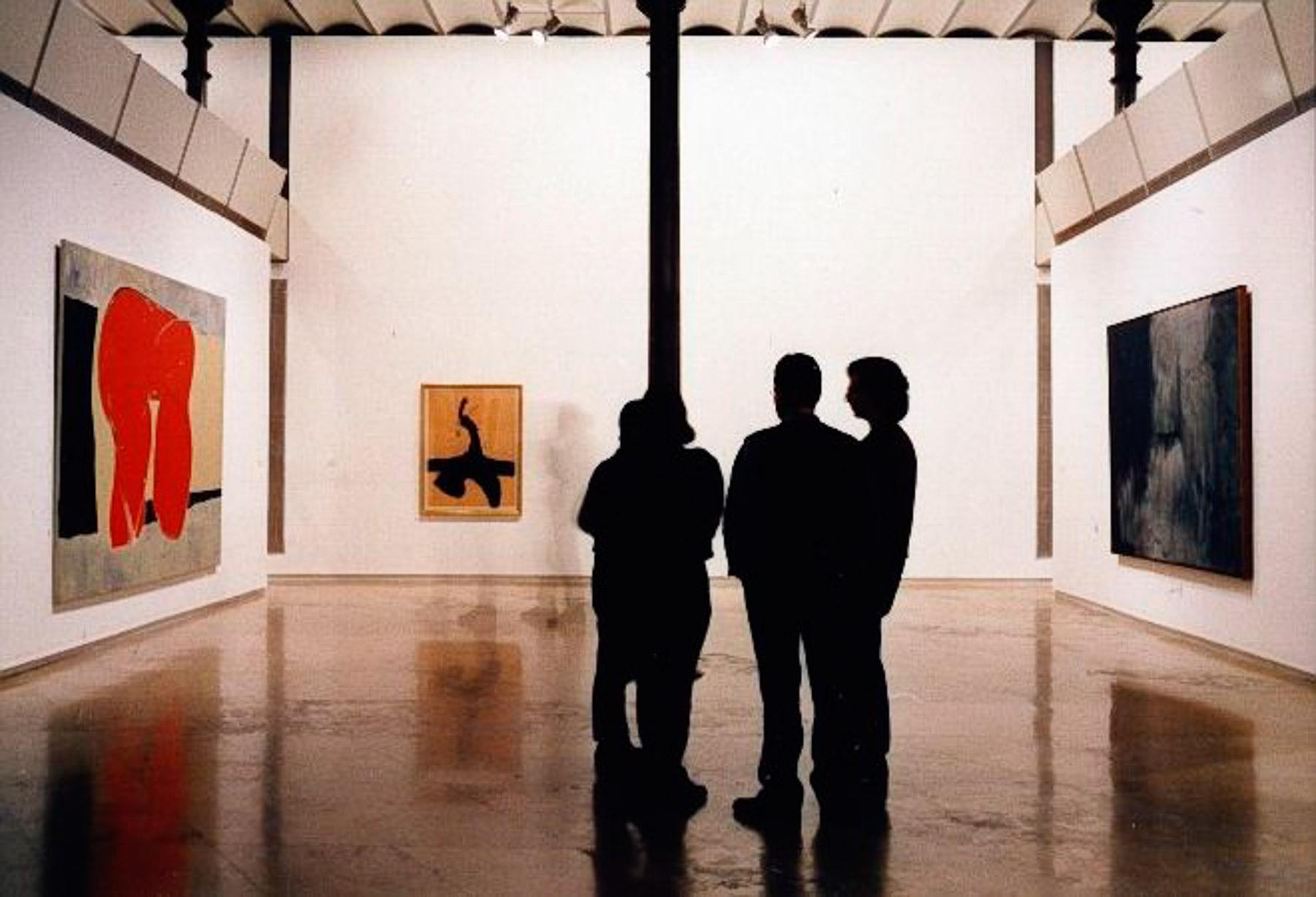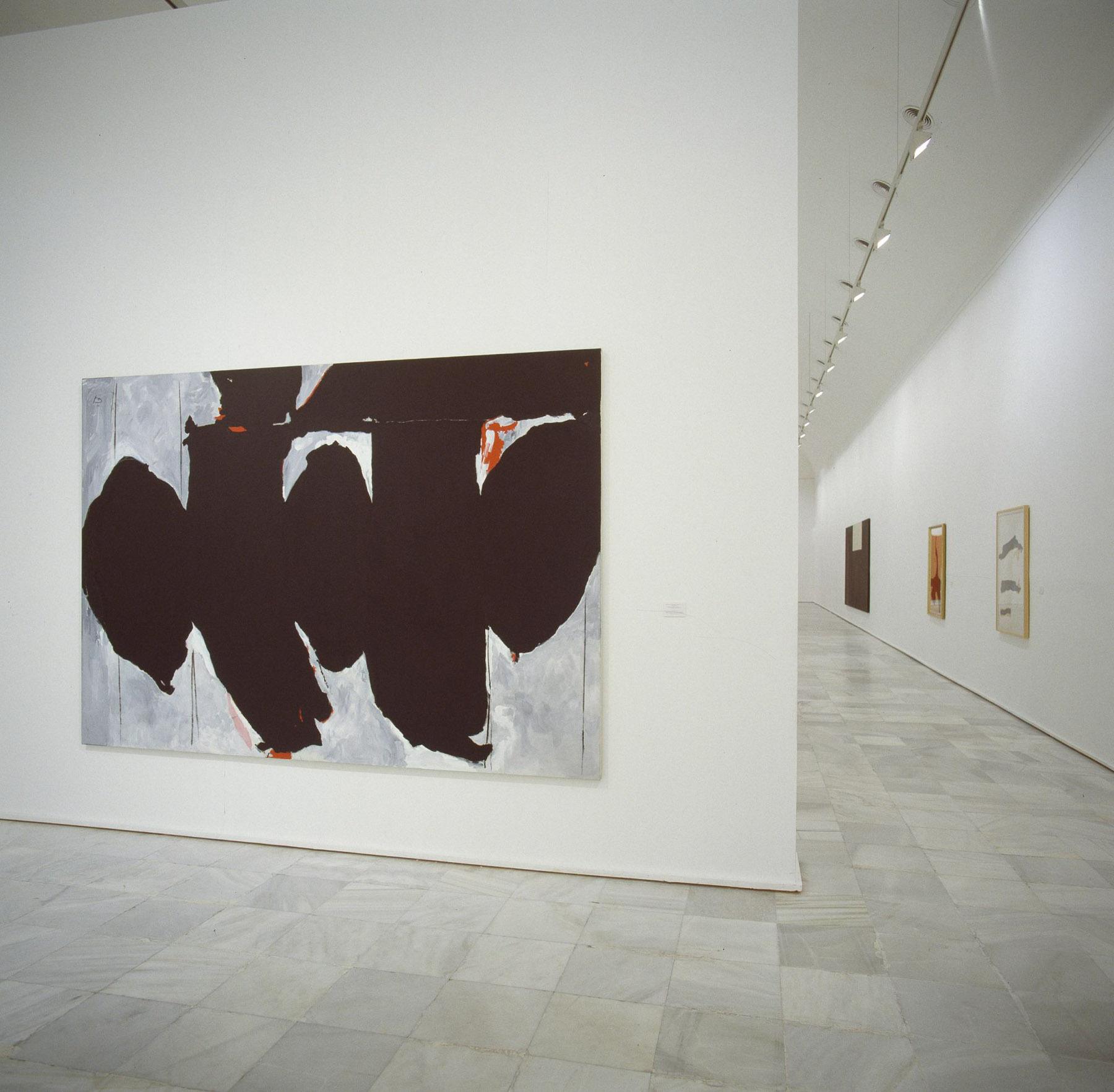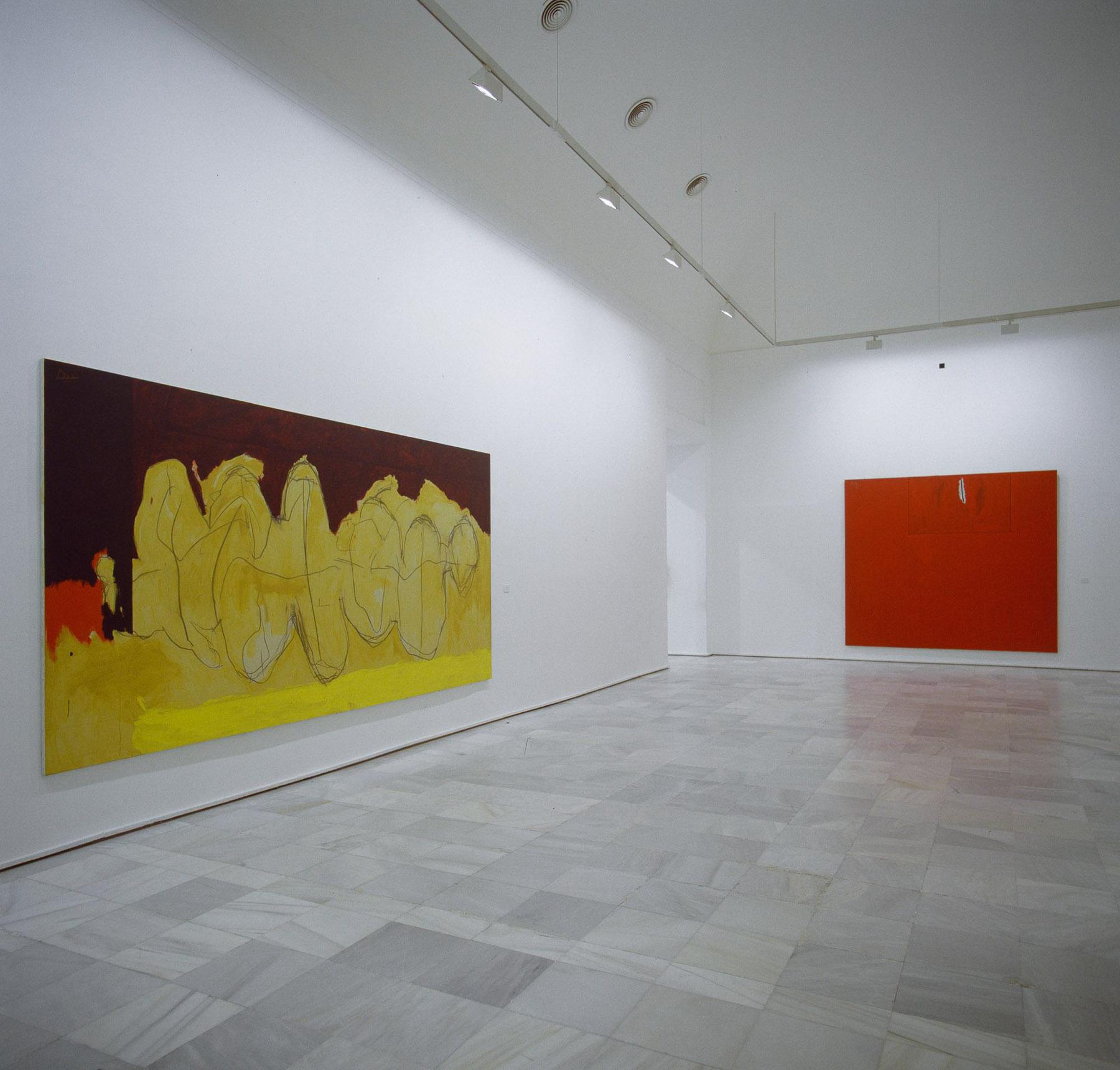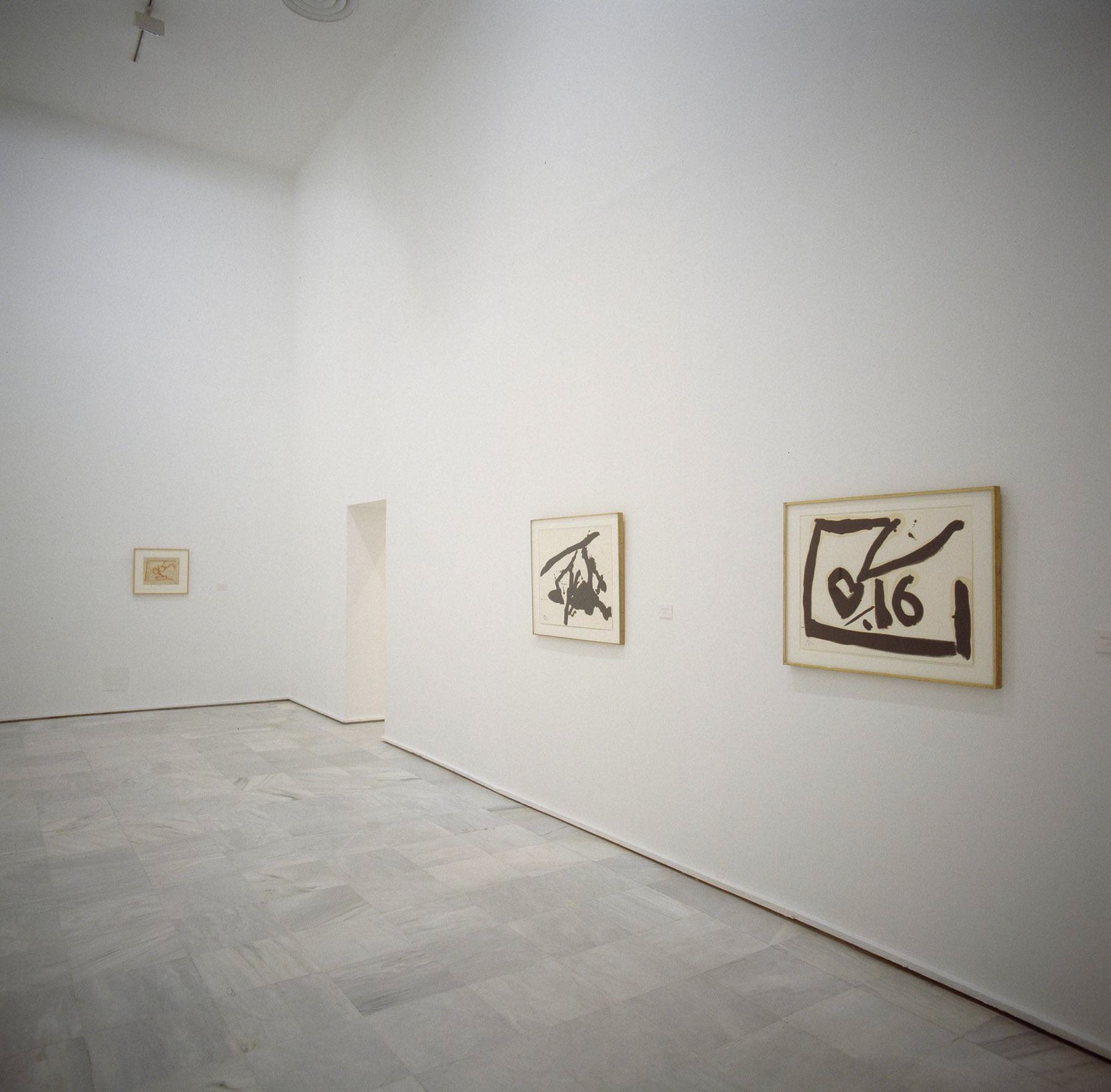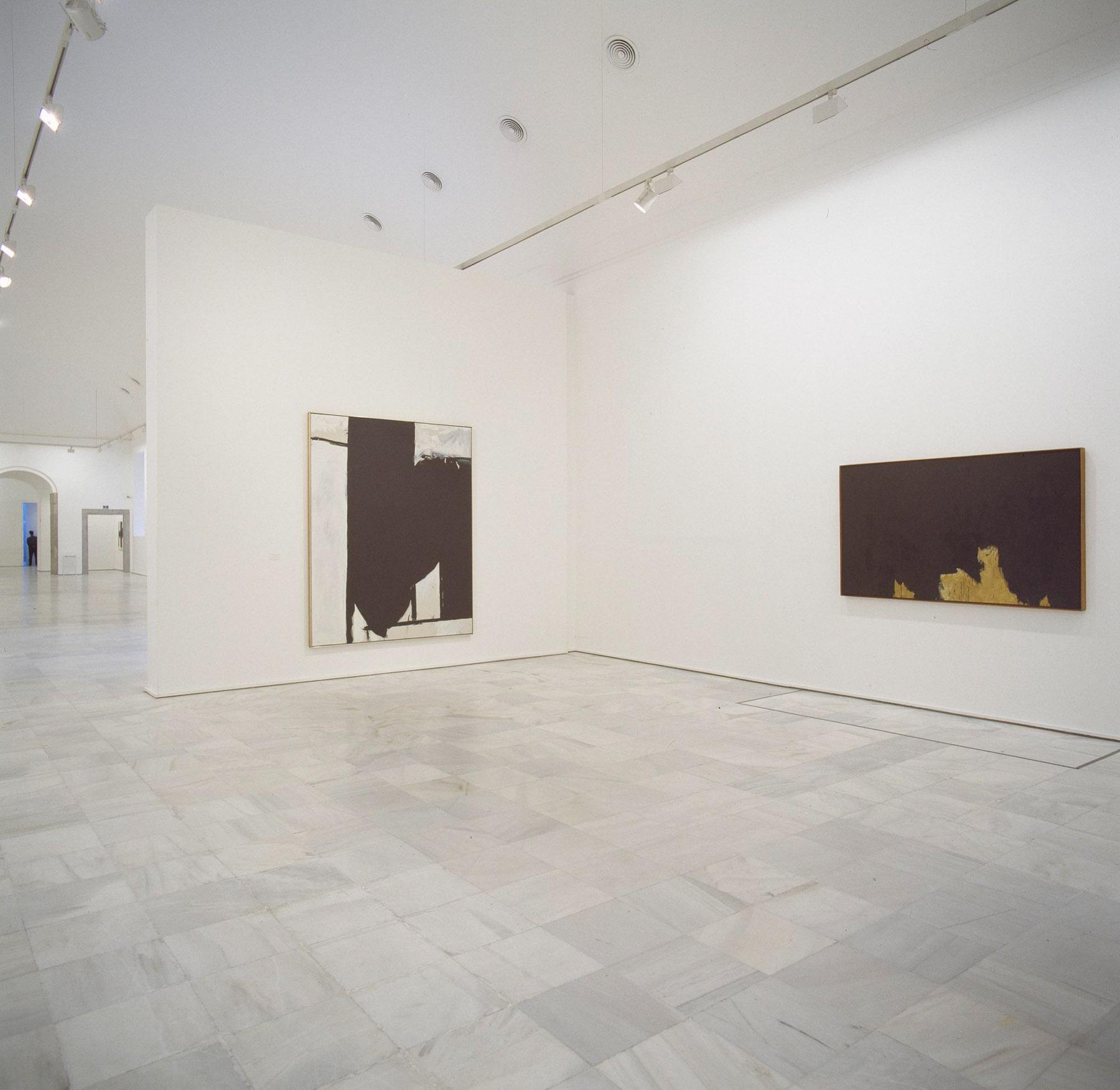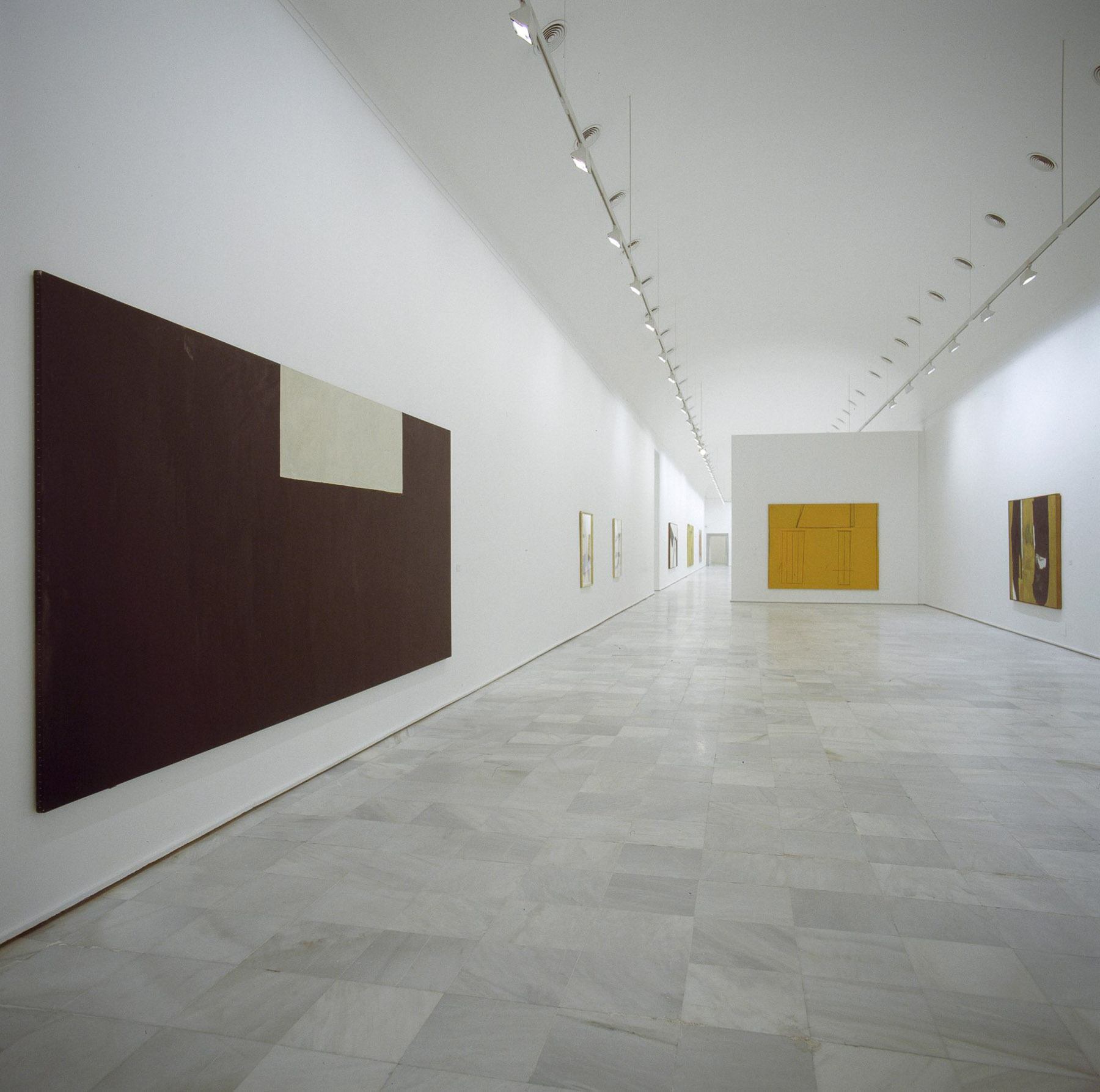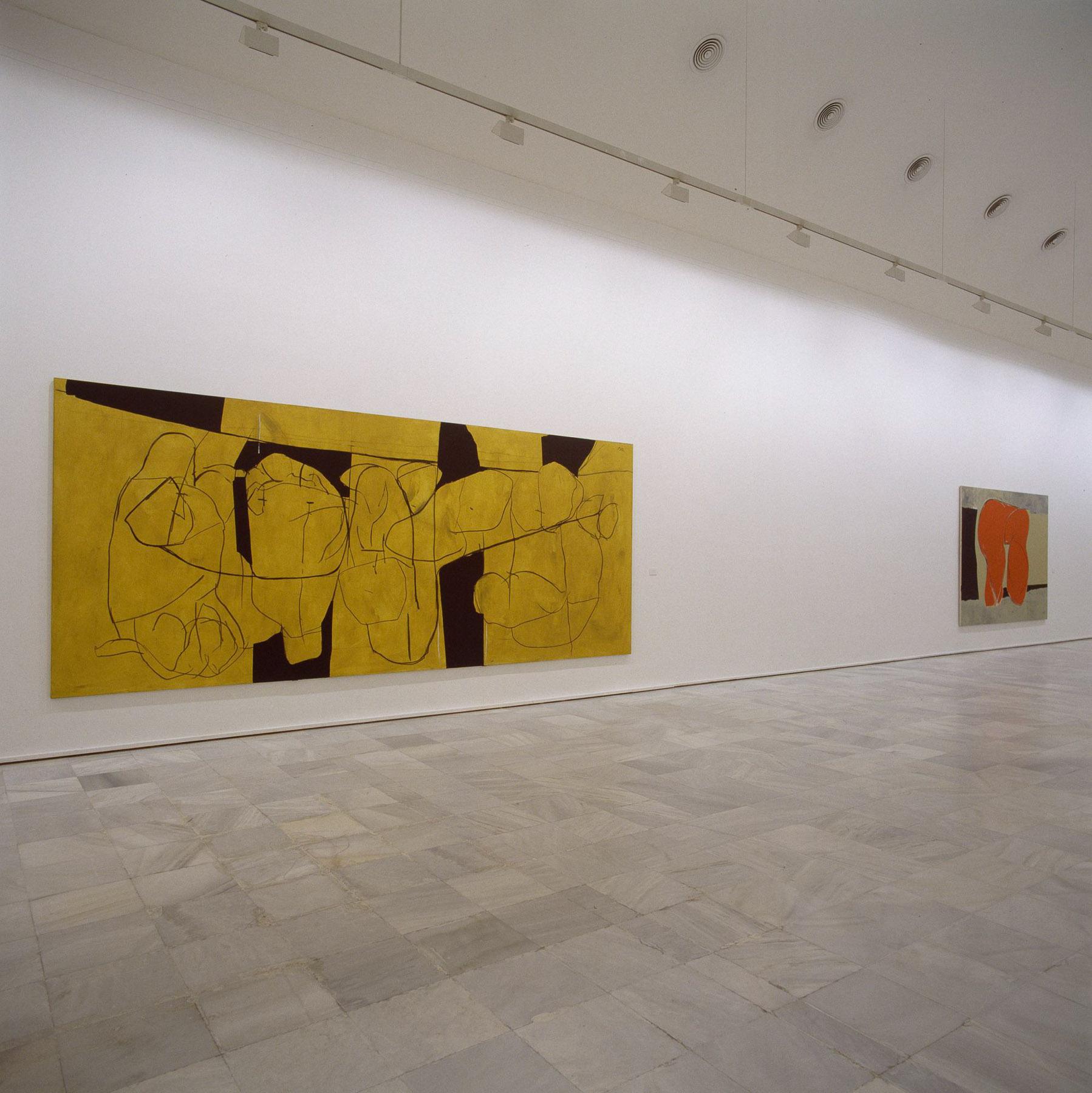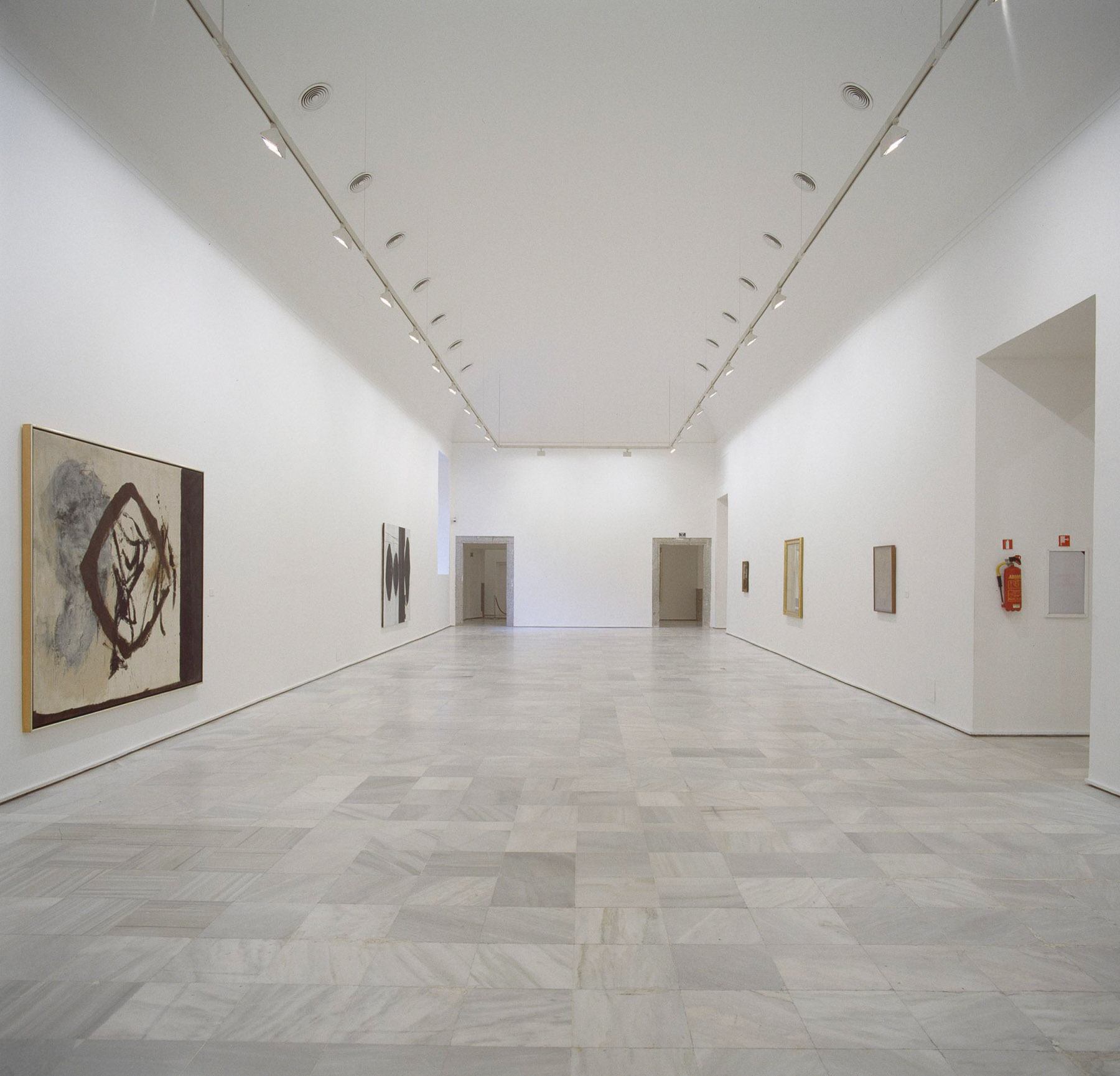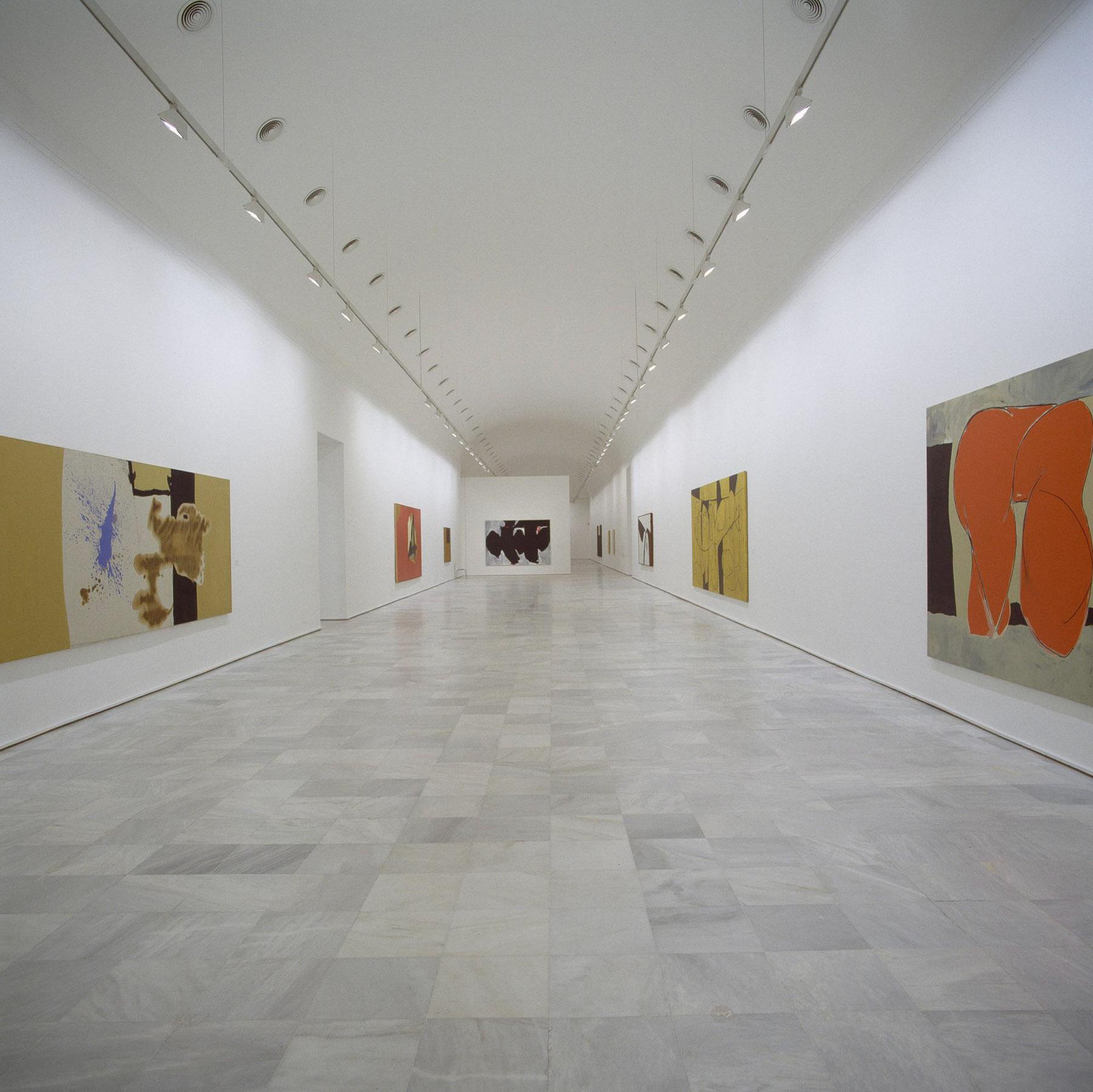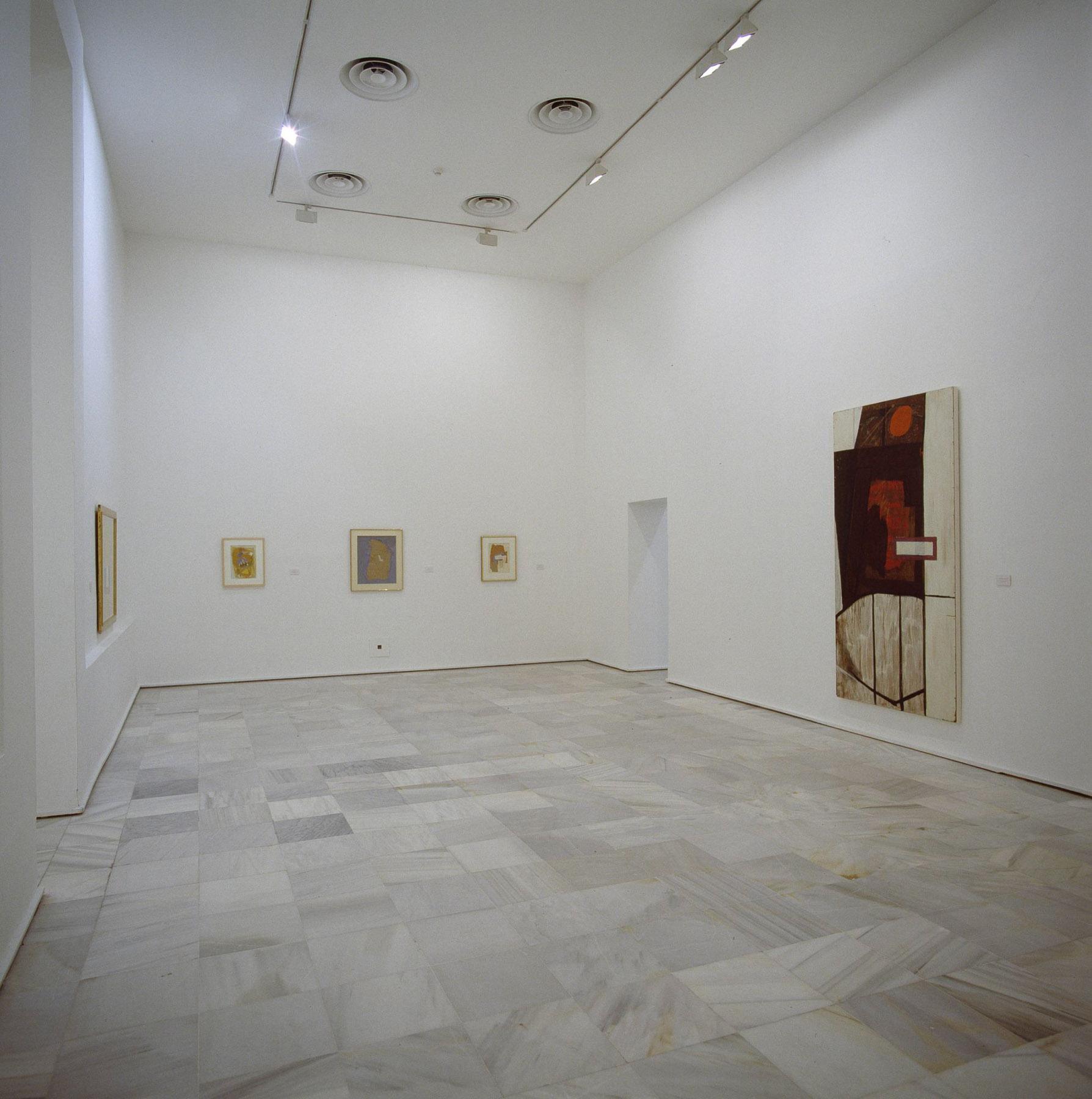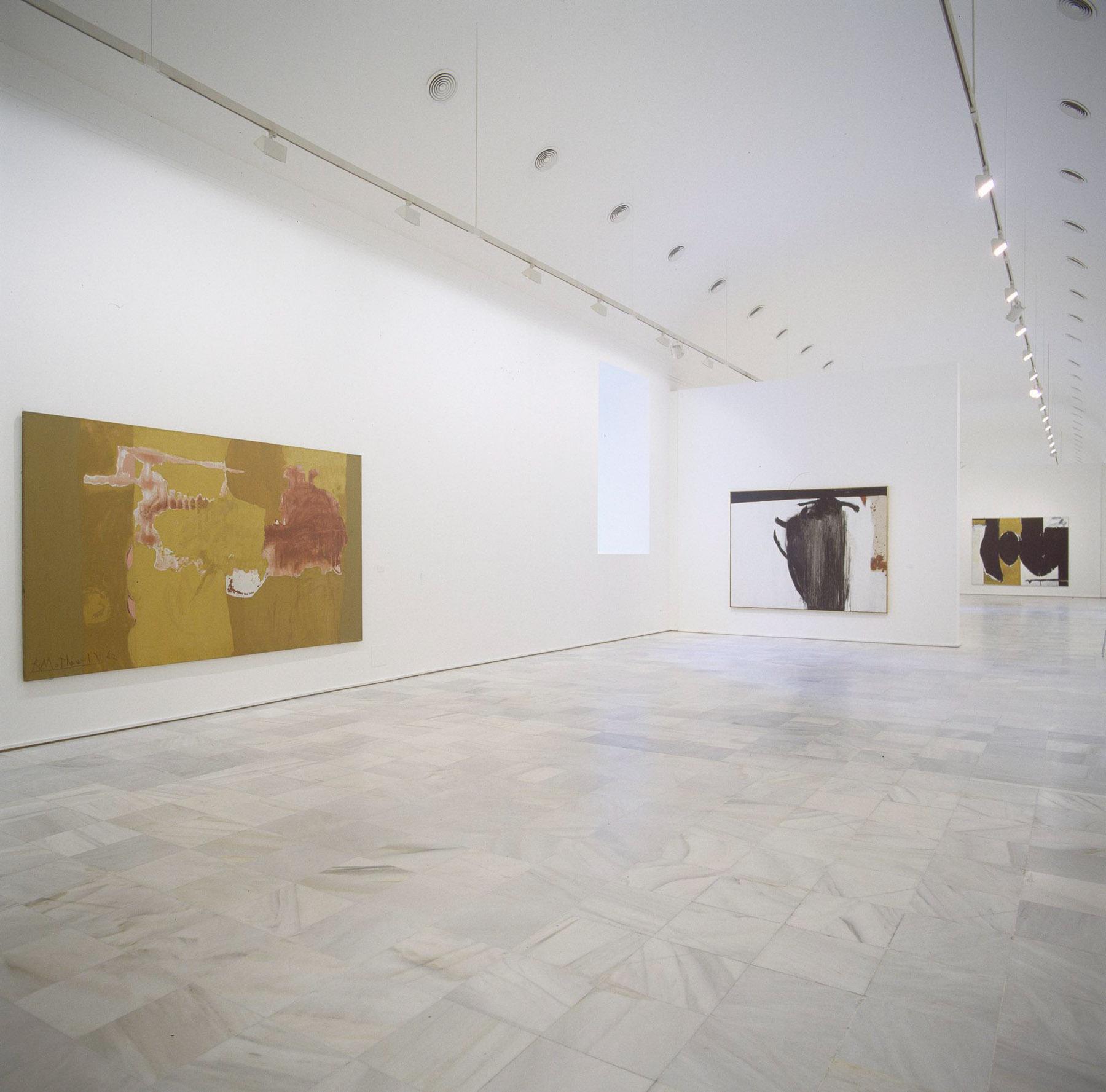Your browser is out-of-date!
Update your browser to view this website correctly. Update my browser now
Robert Motherwell (Aberdeen, Washington, 1915 – Provincetown, Massachusetts, 1991) studied philosophy and aesthetics at Stanford and Harvard universities. In the autumn of 1940 he arrived in New York and entered Columbia University to study with Meyer Schapiro, who encouraged him to practice art and introduced him to the circles of European creators exiled in the United States.
From the Surrealists he learns the notion of psychic automatism, a principle he will never abandon. The use of cubist techniques such as collage, which will accompany him as a counterpoint to painting throughout his life, also dates back to that stage of formation.
Until the age of twenty-five, Motherwell had remained in an observer position. In the summer of 1941, however, he made a trip to Mexico with the Chilean surrealist Roberto Matta, which marked a turning point in his career. This trip decided him definitively towards pictorial practice and brought him into contact for the first time with Hispanic culture, a theme that would become a recurring theme in his work.
Back in New York, Motherwell begins a period of intense activity. He frequented other American artists of his generation: Rothko, Baziotes, Pollock, Gottlieb, De Kooning, many of whom passed through Peggy Guggenheim’s stimulating gallery. Critic Harold Rosenberg writes: “For them, modern painting conforms not to a conscious philosophical or social ideal, but to what is essentially an individual sensual, psychic, and intellectual effort to live actively in the present .” This “particular revolt” is at the origins of American abstract expressionism, one of the most relevant artistic currents of the second half of the 20th century.
Robert Motherwell occupies a unique position within this movement, because he is an isolated figure in the middle of the circle. Due to his extensive training, he is essentially a humanist: he has an insatiable hunger for knowledge, a desire for empathetic engagement with the most distant realities. The certainty that it is necessary to follow what Kandinsky called “internal necessity” places him directly at the core of the artistic activity of his time. He understands creative action as interaction, not with a subject, an ideal or a school, but with the materials of art. “Any intelligent painter carries the whole culture of modern painting in his head. This is his true subject…” states the artist in 1951. His art, like his mind, remains open even when his expression is most intense.
The fulminant success that many artists linked to abstract expressionism soon achieved, including Motherwell himself, turns the movement into a myth. This exhibition tried to avoid any mythification and sought to resituate the work of the most European member of abstract expressionism, highlighting its content, its origins and its development.
The selection of the seventy works made by the curator of the exhibition, the critic Dore Ashton, with the collaboration of Joan Banach, of the Dedalus Foundation, was made retrospectively. It contained from the first collages inspired by Cubism to the large canvases that the artist filled with black and apparently amorphous vertical spots that suggest organic figures, passing through the small-format drawings, true embryos of his production grouped in series or suites of common theme and often inspired by literature, history or personal life. They are the case of the series Elegy to the Spanish Republic [Elegia a la República Española], motivated by the Spanish Civil War, or the one dedicated to James Joyce’s Ulysses .
This exhibition highlighted Motherwell’s ability to “invent and discover” while exploring works in which the artist maps new territory, a process he sometimes described as a “journey into the night”. And he also emphasized the moments of “joy and fun” that the variations on recurring themes brought him. Motherwell possessed a wide emotional register, and it can be said that his work responded to a diversity of moods. These moods – which range from anxiety to constructive pleasure – made up the itinerary of this exhibition which brought together around seventy works, among large paintings on canvas, paintings on paper, collages and drawings.

Exhibition Catalogue

